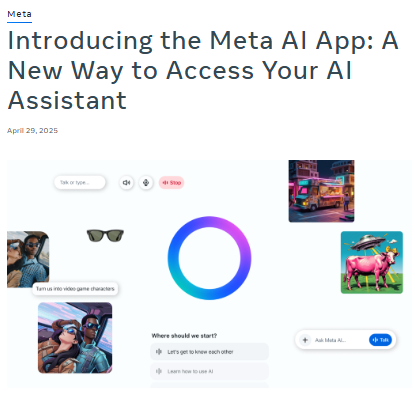A Deep Dive into Automotive Cybersecurity
Overview:
‘Kia Connect’ is the application that is used to connect ‘Kia’ cars which allows the user control various parameters of the vehicle through the application on his/her smartphone. The vulnerabilities found in most Kias built after 2013 with but little exception. Most of the risks are derived from a flawed API that deals with dealer relations and vehicle coordination.
Technical Breakdown of Exploitation:
- API Exploitation: The attack uses the vulnerabilities in Kia’s dealership network. The researchers also noticed that, for example, the logs generated while impersonating a dealer and registering on the Kia dealer portal would be sufficient for deriving access tokens needed for next steps.
- Accessing Vehicle Information: The license plate number allowed the attackers to get the Vehicle Identification Number (VIN) number of their preferred car. This VIN can then be used to look up more information about the car and is an essential number to determine for the shared car.
- Information Retrieval: Having the VIN number in hand, attackers can launch a number of requests to backends to pull more sensitive information about the car owner, including:
- Name
- Email address
- Phone number
- Geographical address
- Modifying Account Access: With this information, attackers could change the accounts settings to make them a second user on the car, thus being hidden from the actual owner of the account.
- Executing Remote Commands: Once again, it was discovered that attackers could remotely execute different commands on the vehicle, which includes:some text
- Unlocking doors
- Starting the engine
- Monitoring the location of the vehicle in terms of position.
- Honking the horn
Technical Execution:
The researchers demonstrated that an attacker could execute a series of four requests to gain control over a Kia vehicle:
- Generate Dealer Token: The attacker sends an HTTP request in order to create a dealer token.
- Retrieve Owner Information: As indicated using the generated token, they make another request to another endpoint that returns the owner’s email address and phone number.
- Modify Access Permissions: The attacker takes advantage of the leaked information (email address and VIN) of the owner to change between users accounts and make himself the second user.
- Execute Commands: As the last one, they can send commands to perform actions on the operated vehicle.
Security Response and Precautionary Measures for Vehicle Owners
- Regular Software Updates: Car owners must make sure their cars receive updates on the recent software updates provided by auto producers.
- Use Strong Passwords: The owners of Kia Connect accounts should develop specific and complex passwords for their accounts and then update them periodically. They should avoid using numbers like the birth dates, vehicle numbers and simple passwords.
- Enable Multi-Factor Authentication: For security, vehicle owners should turn on the use of the secondary authentication when it is available to protect against unauthorized access to an account.
- Limit Personal Information Sharing: Owners of vehicles should be careful with the details that are connected with the account on their car, like the e-mail or telephone number, sharing them on social networks, for example.
- Monitor Account Activity: It is also important to monitor the account activity because of change or access attempts that are unauthorized. In case of any abnormality or anything suspicious felt while using the car, report it to Kia customer support.
- Educate Yourself on Vehicle Security: Being aware of cyber threats that are connected to vehicles and learning about how to safeguard a vehicle from such threats.
- Consider Disabling Remote Features When Not Needed: If remote features are not needed, then it is better to turn them off, and then turn them on again when needed. This can prove to help diminish the attack vector for would-be hackers.
Industry Implications:
The findings from this research underscore broader issues within automotive cybersecurity:
- Web Security Gaps: Most car manufacturers pay more attention to equipment running in automobiles instead of the safety of the websites that the car uses to operate thereby exposing automobiles that are connected very much to risks.
- Continued Risks: Vehicles become increasingly connected to internet technologies. Auto makers will have to carry cyber security measures in their cars in the future.
Conclusion:
The weaknesses found in Kia’s connected car system are a key concern for Automotive security. Since cars need web connections for core services, suppliers also face the problem of risks and need to create effective safeguards. Kia took immediate actions to tighten the safety after disclosure; however, new threats will emerge as this is a dynamic domain involving connected technology. With growing awareness of these risks, it is now important for car makers not only to put in proper security measures but also to maintain customer communication on how it safeguards their information and cars against cyber dangers. That being an incredibly rapid approach to advancements in automotive technology, the key to its safety is in our capacity to shield it from ever-present cyber threats.
Reference:
- https://timesofindia.indiatimes.com/auto/cars/hackers-could-unlock-your-kia-car-with-just-a-license-plate-is-yours-safe/articleshow/113837543.cms
- https://www.thedrive.com/news/hackers-found-millions-of-kias-could-be-tracked-controlled-with-just-a-plate-number
- https://www.securityweek.com/millions-of-kia-cars-were-vulnerable-to-remote-hacking-researchers/
- https://news24online.com/auto/kia-vehicles-hack-connected-car-cybersecurity-threat/346248/
- https://www.malwarebytes.com/blog/news/2024/09/millions-of-kia-vehicles-were-vulnerable-to-remote-attacks-with-just-a-license-plate-number
- https://informationsecuritybuzz.com/kia-vulnerability-enables-remote-acces/
- https://samcurry.net/hacking-kia







.webp)
